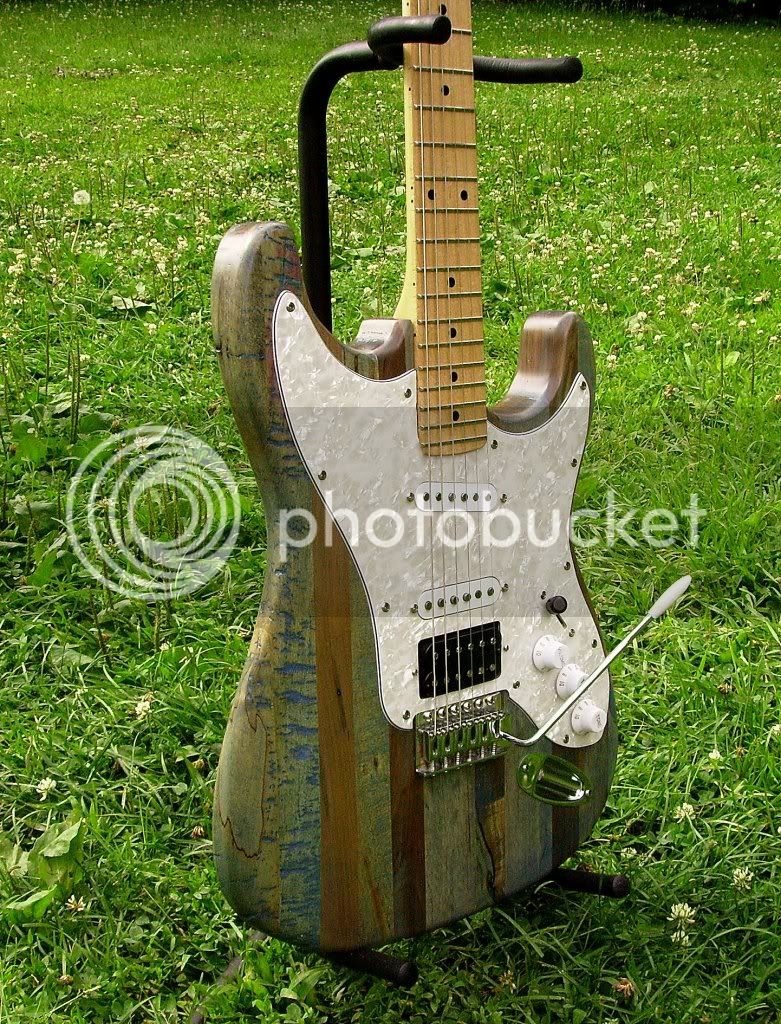Finally
Seems this thread made it down about 5 pages, so bumping it up coincided nicely with my final glue up of a bench...
Finally, after milling lots of wood for myself and lots more for friends, I have gotten to “finish” a project of my own with wood I actually cut myself. Now, there is a bit of history here, literally, as I cut this wood about 7 years ago… It was an elm tree that grew in the yard of my sister and BIL’s first house. I was just going to cut it down for them, but when I mentioned that I could make something out of it, they were fairly excited. Fortunately, they are patient. The tree was about 6” dbh.. not much to mill. I cut it off about head height, and halved the remaining trunk before I cut it off the stump. Much easier to cut a skinny log when still attached to the roots. The saw of choice… Dad’s $50 024 find. Good saw, but I’ve since graduated to 066’s and a 3120xp waiting for its first job. Better millers indeed.
After I brought it home, I used a Homelite XL gift from a friend who’s grandfather used it to heat his house well into his 90’s. A million miles on it, but it still runs. All of this cutting was freehanded with non-ripping chains. Gotta start somewhere.
The top of the bench was made of the two largest boards. They were about 8” on one end, and about 5” on the other. I had to joint them, and glue them together to get a board just over 12” wide that I later trimmed. You can see the diagonal joint in the coloring of the wood on the bottom of the bench seat.
This project is where I learned that Elm is a troublesome wood to work. With very sharp hand planes, I was able to plane it OK, but I did use a hand scraper to clean up a bit. The bottom of the seat shows tear out… this was from a 12” power planer with brand new blades, and very light cuts.
I made a half scale proto type after I decided on a design. This was really helpful to clear up a few details and proportions. Just scrap pine and hot glue, but worth every penny and minute. I also made some practice joints to see if I needed to adjust the taper of the wedges holding the pieces together. Although I made the flares in the mortises at 8 degrees, I discovered that a wedge of 10 degrees worked best. 8 left the joint loose, and 12 didn’t allow it to be driven all the way in.
I was careful to choose the grain of the wood for the legs and stretchers carefully… I ended up cutting up lots of wood to get them out, without knots.
The most challenging (self imposed) was the joint I used to connect the legs to the bench, and the stretcher between the legs. It is what I would call a fully blind dovetail, or a hidden wedged joint. Like a mortise and tennon joint, there is a blind hole, but it flares out as you cut into the board at 8 degrees. The tennon is then slotted and wedges are put in before it is pressed together. Better get it right, or you don’t get it apart, even without glue. Not that I wanted to make any part of this easier, the legs taper from a rectangular shape to a rectangular shape turned 90 degrees at the other end. I hope you can see that from the picture. The legs are then set in the bench seat flared out in two directions too. In order to get everything together, I had to have the legs have their mortise perpendicular to the bench bottom so the leg assembly would slide into the bench bottom. I spent LOTS of time getting the connecting parts to fit, and I didn’t really know if it was going to work until I finally put it together because I couldn’t test fit the parts without wedging it together. The long stretcher had just a wedged mortise at either end, and will be trimmed once the glue is dry. The long stretcher was also fun to make - it is short and wide at either end, and tall and skinny in the middle. If you wedge it on your work bench and squeeze with the vise to get it to bend, you can still plane the concave surface when it is bent “flat” if you put a little support under the middle.. Kinda discovered that by accident.
There were really few right angles on this piece, but I think it turned out OK given my novice skills. One of the joints on the bottom of the seat didn’t slide all the way home (about 1/16” off) but unless you are under the bench, you won’t see it. Two of the joints between the legs and stretchers had a bit of play before the glue dried, but their geometry will prevent them from coming apart if the glue does give way.
None the less, I think my sister will enjoy it, and I cannot wait to get a picture of my little niece on it.
P.S. By the way, does anybody know anything about planes made by the “Metallic Plane Company” That is the one I have…it has an adjustable mouth, corrugated bottom, and unique lever depth adjustment for the blade. It is about the size of a Stanley #3… just curious if anybody knows any more about this $14 rummage sale find… it works well. The picture of my glue bottle with the plane shaving is purely self centered bragging about my lucky sharpening job.





 Inspiring too.
Inspiring too.


















































